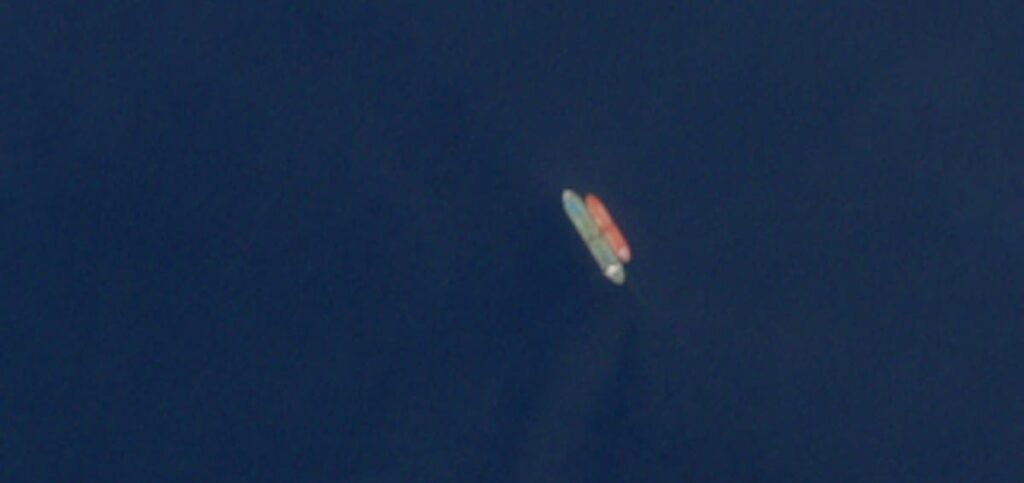New satellite imagery shows what appears to be Iran’s shadow fleet operating in the South China Sea, transferring oil via ship-to-ship to tankers possibly bound for China.
Newsweek has reached out to the U.S. State Department, the Iranian and Chinese foreign ministries for comment.
Why It Matters
The U.S. is escalating enforcement against Iran’s covert oil trade. Beijing’s refiners have increasingly relied on Russian, Iranian and Venezuelan oil, much of it carried by older or reflagged “shadow” vessels operating outside Western shipping and insurance systems.
What To Know
Satellite imagery captured on Sunday shows at least five oil tankers conducting ship-to-ship transfers in the South China Sea, roughly 70 kilometers off Malaysia’s eastern coast, near Johor, according to an open-source intelligence (OSINT) X account specializing in maritime security in the Indo-Pacific.
Charlie B., who posts on X as @supbrow, said that most of the shipments appeared to involve oil moving from Iran to China.
In October, the U.S. government imposed new sanctions on a network of companies and ships it said had enabled Iran to earn billions of dollars from oil exports, targeting those involved in moving Iranian liquefied petroleum gas (LPG), nearly two dozen shadow fleet vessels, a China-based crude oil terminal, and an independent “teapot” refinery—all part of a network helping Iran sell oil and fund its proxy groups.
“This is the fourth round of sanctions where the Trump Administration has targeted China-based refineries that continue to purchase Iranian oil,” a statement by the U.S. Department of the Treasury’s Office of Foreign Assets Control (OFAC) read on October 9. Iran has previously condemned sanctions against its oil industry.
Iranian oil discounts to China have hit a year‑high as sanctions on Iran and Russia tighten, squeezing independent refiners already constrained by import quotas, trade sources told Reuters on October 29. “There was just too much supply, and the market is directionless,” a China-based trader was quoted as saying, though the report mentioned sanctions prompting some buyers in China to pause purchases.
Last month, several operators at Qingdao Port in eastern Shandong province sought to impose new restrictions possibly aimed at foreign “shadow fleet” tankers delivering sanctioned crude.
As for Malaysia, which recently signed a trade agreement with the U.S., limited resources for maritime authorities make it difficult to curb the widespread transshipment of U.S.-sanctioned Iranian oil off the country’s coast, a 2024 report by the Malaysian think-tank, the Institute of Strategic & International Studies (ISIS).
What People Are Saying
U.S. Department of Treasury said in press release on October 9: “Iran’s shadow fleet employs obfuscation tactics to mask shipments of Iran-origin petroleum and relies on services from companies in China and elsewhere to deliver their goods. Iranian exporters often transfer cargoes between shadow fleet vessels—at times with the aid of tugboats—in the Persian Gulf and in waters off the coast of Singapore and Malaysia in order to disguise the origin of their cargoes.”
What Happens Next
Iran is expected to keep taking steps to circumvent U.S. sanctions on its oil, but buyers may become increasingly cautious amid sanctions’ risks.
Read the full article here


